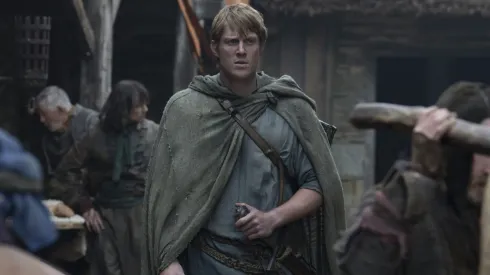As A Knight of the Seven Kingdoms heads into its second season, the wider Westerosi canon gains a renewed sense of continuity. The strongest episodes across Game of Thrones, House of the Dragon and the first season of A Knight of the Seven Kingdoms form a kind of unofficial spine—chapters that illuminate shifting loyalties, ancestral wounds and the quiet traditions that bind each era together.
These standout installments are not united by scale alone. Some deliver political precision, others reveal the vulnerabilities of dynasties on the brink, while a few capture the intimate choices that alter the course of history.
“Blackwater” — Game of Thrones (Season 2, Episode 9)
A landmark hour in the early seasons, “Blackwater” captures the raw mechanics of power in Westeros long before Dunk and Egg’s era. The episode unfolds almost entirely within King’s Landing as Stannis Baratheon attempts to seize the Iron Throne. Through strategy, wildfire, and desperate alliances, it reveals how political control is won not only in council rooms but in moments of visceral chaos. It remains one of the clearest illustrations of how war shapes dynasties for generations.
“The Door” — Game of Thrones (Season 6, Episode 5)
Both mystical and devastating, “The Door” bridges past and present through Bran’s visions, revealing how histories are not merely inherited but created through accidental tragedies. It offers a rare look at the mechanics of prophecy and memory—forces that subtly echo through the world Dunk and Egg will one day navigate. The narrative weight of this episode underscores the idea that even the smallest characters carry legacies no one expected.
“The Laws of Gods and Men” — Game of Thrones (Season 4, Episode 6)
Centered on Tyrion Lannister’s unforgettable trial, this episode explores the moral contradictions of Westerosi justice. What emerges is not just a courtroom drama but a study of power disguised as righteousness. The writing cuts to the heart of political performance, exposing how truth bends under the influence of alliances and history. Its themes resonate deeply with the feudal tensions present in the age of Dunk and Egg.
“Baelor” — Game of Thrones (Season 1, Episode 9)
“Baelor” marks the moment Game of Thrones redefined itself—and modern television storytelling. The execution of Ned Stark shatters assumptions about narrative safety and sets off a chain of political ruptures that reverberate for decades. Nothing in Westeros remains untouched by this event, and the shockwaves ripple all the way into the quieter, humbler stories told in A Knight of the Seven Kingdoms. It is essential because it shapes the conditions of a realm that is always recovering from old wounds.
“Fire and Blood” — Game of Thrones (Season 1, Episode 10)
This finale widens the scope of the world after Ned Stark’s death. As the Starks splinter and King’s Landing tightens its grip, Daenerys Targaryen claims a destiny that will redefine her house. The birth of her dragons marks the reawakening of ancient magic and signals the long arc of Targaryen influence—an arc whose roots stretch directly into the events depicted in House of the Dragon and indirectly into the political climate inherited by Dunk and Egg.
“The Old Gods and the New” — Game of Thrones (Season 2, Episode 6)
Combining urban unrest, shifting loyalties, and religious tension, this episode reveals how fragile political authority can be. The dramatic riot in King’s Landing showcases how quickly the common people can change the direction of power, while Theon’s storyline highlights how identity fractures under pressure. Its thematic focus on tradition versus survival complements the moral dilemmas at the heart of A Knight of the Seven Kingdoms.
“Hardhome” — Game of Thrones (Season 5, Episode 8)
A turning point in the series’ approach to scale and threat, “Hardhome” elevates the conflict beyond human politics. The chilling confrontation north of the Wall reframes the story by reminding viewers that Westeros is shaped not only by thrones and wars, but by forces ancient and merciless. Its spectacle, dread, and emotional stakes make it an indispensable chapter in the broader mythology the Dunk and Egg tales quietly inherit.
“Battle of the Bastards” — Game of Thrones (Season 6, Episode 9)
Beyond being a technical masterpiece, this episode distills the brutality and honor codes underlying Westerosi warfare. Jon Snow’s confrontation with Ramsay Bolton is as much about reclaiming Winterfell as it is about fighting for the soul of the North. With its suffocating visuals and human cost, it serves as a modern reminder of the knightly values and battlefield ethics that characters like Ser Duncan the Tall embody in an earlier age.
“The Lord of the Tides” — House of the Dragon (Season 1, Episode 8)
A rich, dialogue-driven episode that reveals the slow unraveling of Targaryen stability. Succession debates tear at the Velaryon family, and an aging Viserys attempts one final act of unity. The dinner scene—tender, awkward, and foreboding—perfectly captures how dynasties collapse not with explosions but with accumulated wounds. For anyone tracing the roots of the Targaryen downfall, this episode is indispensable.
“Driftmark” — House of the Dragon (Season 1, Episode 7)
Dark, atmospheric, and charged with family tension, “Driftmark” stands as one of the most emotionally volatile episodes of the prequel series. The Velaryon funeral sets the stage for old grievances to resurface, leading to dragon claims, violent confrontations, and alliances sealed in shadow. The episode’s tone—somber, symbolic, storm-lit—captures the kind of generational conflict that shapes Westeros long before the events of Dunk and Egg.
